North Andover (978) 686-7623
Tewksbury (978) 640-1010
Blog
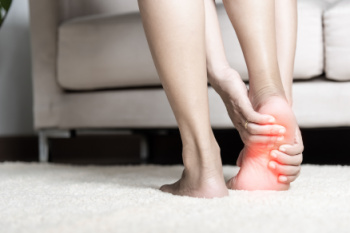
Heel pain can be debilitating, and one common cause is bursitis. This condition occurs when the bursa, a small fluid-filled sac that cushions and lubricates the joints, becomes inflamed. In the case of heel bursitis, the bursa located at the back of the heel becomes irritated and swollen. The bursa is typically aggravated by activities that put pressure on the affected area, such as walking or wearing tight shoes. Inflammation can also be caused by repetitive overuse or direct trauma to the heel. Diagnosis usually involves a physical examination, and sometimes imaging tests like X-rays or ultrasound are used to rule out other conditions. In some cases, a podiatrist may recommend corticosteroid injections to alleviate pain and inflammation. If heel pain persists or disrupts daily activities, it is suggested you make an appointment with a podiatrist. This foot doctor can offer specialized treatment and personalized advice for effective pain management and recovery.
Many people suffer from bouts of heel pain. For more information, contact one of our podiatrists of Foot Health Center of Merrimack Valley. Our doctors can provide the care you need to keep you pain-free and on your feet.
Causes of Heel Pain
Heel pain is often associated with plantar fasciitis. The plantar fascia is a band of tissues that extends along the bottom of the foot. A rip or tear in this ligament can cause inflammation of the tissue.
Achilles tendonitis is another cause of heel pain. Inflammation of the Achilles tendon will cause pain from fractures and muscle tearing. Lack of flexibility is also another symptom.
Heel spurs are another cause of pain. When the tissues of the plantar fascia undergo a great deal of stress, it can lead to ligament separation from the heel bone, causing heel spurs.
Why Might Heel Pain Occur?
- Wearing ill-fitting shoes
- Wearing non-supportive shoes
- Weight change
- Excessive running
Treatments
Heel pain should be treated as soon as possible for immediate results. Keeping your feet in a stress-free environment will help. If you suffer from Achilles tendonitis or plantar fasciitis, applying ice will reduce the swelling. Stretching before an exercise like running will help the muscles. Using all these tips will help make heel pain a condition of the past.
If you have any questions please contact one of our offices located in North Andover, and Tewksbury, MA . We offer the newest diagnostic and treatment technologies for all your foot and ankle needs.

Plantar fasciitis is a common foot condition characterized by inflammation of the plantar fascia, a thick band of tissue that runs along the bottom of the foot from the heel to the toes. This inflammation typically occurs where the fascia attaches to the heel bone, causing sharp heel pain, particularly with the first steps in the morning or after prolonged periods of inactivity. The root cause of plantar fasciitis involves micro-tears and degeneration of the plantar fascia due to repetitive stress and strain. Risk factors include excessive physical activity, obesity, wearing inappropriate footwear, and having structural abnormalities, such as flat feet or high arches. Additionally, occupations requiring prolonged standing or walking can increase susceptibility. If you have heel pain, it is suggested that you contact a podiatrist who can accurately diagnose and treat plantar fasciitis.
Plantar fasciitis is a common foot condition that is often caused by a strain injury. If you are experiencing heel pain or symptoms of plantar fasciitis, contact one of our podiatrists from Foot Health Center of Merrimack Valley. Our doctors can provide the care you need to keep you pain-free and on your feet.
What Is Plantar Fasciitis?
Plantar fasciitis is one of the most common causes of heel pain. The plantar fascia is a ligament that connects your heel to the front of your foot. When this ligament becomes inflamed, plantar fasciitis is the result. If you have plantar fasciitis you will have a stabbing pain that usually occurs with your first steps in the morning. As the day progresses and you walk around more, this pain will start to disappear, but it will return after long periods of standing or sitting.
What Causes Plantar Fasciitis?
- Excessive running
- Having high arches in your feet
- Other foot issues such as flat feet
- Pregnancy (due to the sudden weight gain)
- Being on your feet very often
There are some risk factors that may make you more likely to develop plantar fasciitis compared to others. The condition most commonly affects adults between the ages of 40 and 60. It also tends to affect people who are obese because the extra pounds result in extra stress being placed on the plantar fascia.
Prevention
- Take good care of your feet – Wear shoes that have good arch support and heel cushioning.
- Maintain a healthy weight
- If you are a runner, alternate running with other sports that won’t cause heel pain
There are a variety of treatment options available for plantar fasciitis along with the pain that accompanies it. Additionally, physical therapy is a very important component in the treatment process. It is important that you meet with your podiatrist to determine which treatment option is best for you.
If you have any questions, please feel free to contact one of our offices located in North Andover, and Tewksbury, MA . We offer the newest diagnostic and treatment technologies for all your foot care needs.

Plantar fasciitis, a common cause of heel pain, results from inflammation of the plantar fascia, the thick band of tissue connecting the heel bone to the toes. This condition often causes stabbing pain, especially in the morning. Standard treatments include rest, targeted exercises, and nonsteroidal anti-inflammatory drugs. Custom-made orthotics, however, provide an extremely effective solution by offering tailored support and cushioning. Unlike over-the-counter inserts, these orthotics are specifically designed to fit the unique contours of an individual's feet, alleviating pressure on the plantar fascia. By distributing weight more evenly and correcting abnormal foot mechanics, custom orthotics can significantly reduce pain and inflammation. In some cases, they are as effective as corticosteroid injections in reducing thickness and swelling, providing long-term relief and preventing recurrence. If you have persistent discomfort from plantar fasciitis, it is suggested that you schedule an appointment with a podiatrist to discuss whether custom-made orthotics can help you.
If you are having discomfort in your feet and would like to try orthotics, contact one of our podiatrists from Foot Health Center of Merrimack Valley. Our doctors can provide the care you need to keep you pain-free and on your feet.
What Are Orthotics?
Orthotics are inserts you can place into your shoes to help with a variety of foot problems such as flat feet or foot pain. Orthotics provide relief and comfort for minor foot and heel pain but can’t correct serious biomechanical problems in your feet.
Over-the-Counter Inserts
Orthotics come in a wide variety of over-the-counter inserts that are used to treat foot pain, heel pain, and minor problems. For example, arch supports can be inserted into your shoes to help correct overarched or flat feet, while gel insoles are often used because they provide comfort and relief from foot and heel pain by alleviating pressure.
Prescription Orthotics
If over-the-counter inserts don’t work for you or if you have a more severe foot concern, it is possible to have your podiatrist prescribe custom orthotics. These high-quality inserts are designed to treat problems such as abnormal motion, plantar fasciitis, and severe forms of heel pain. They can even be used to help patients suffering from diabetes by treating foot ulcers and painful calluses and are usually molded to your feet individually, which allows them to provide full support and comfort.
If you are experiencing minor to severe foot or heel pain, it’s recommended to speak with your podiatrist about the possibilities of using orthotics. A podiatrist can determine which type of orthotic is right for you and allow you to take the first steps towards being pain-free.
If you have any questions please contact one of our offices located in North Andover, and Tewksbury, MA . We offer the newest diagnostic and treatment technologies for all your foot and ankle needs.
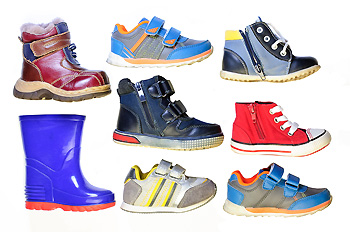
Finding the right shoes for your child can be a real challenge, especially with their feet constantly growing and changing. To ensure a proper fit, start by checking for wiggle room at the front of the shoe. Aim for about half an inch between the tip of your child’s longest toe and the end of the shoe to allow for comfortable toe movement. Next, focus on the width by examining the widest part of the foot, making sure there’s no bulging or squeezing of the pinky toe, which indicates the shoe is too narrow. Finally, assess the heel fit by sliding your finger between the back of the shoe around your child’s heel. If you can fit more than one or two fingers, the shoe may be too wide. Properly fitting shoes are important for your child’s comfort and foot health. For more information about how to find the right shoes for your child, it is suggested you make an appointment with a podiatrist.
Making sure that your children maintain good foot health is very important as they grow. If you have any questions, contact one of our podiatrists of Foot Health Center of Merrimack Valley. Our doctors can provide the care you need to keep you pain-free and on your feet.
Keeping Children's Feet Healthy
Having healthy feet during childhood can help prevent medical problems later in life, namely in the back and legs. As children grow, their feet require different types of care. Here are some things to consider...
Although babies do not walk yet, it is still very important to take care of their feet.
Avoid putting tight shoes or socks on his or her feet.
Allow the baby to stretch and kick his or her feet to feel comfortable.
As a toddler, kids are now on the move and begin to develop differently. At this age, toddlers are getting a feel for walking, so don’t be alarmed if your toddler is unsteady or ‘walks funny’.
As your child gets older, it is important to teach them how to take care of their feet.
Show them proper hygiene to prevent infections such as fungus.
Be watchful for any pain or injury.
Have all injuries checked by a doctor as soon as possible.
Comfortable, protective shoes should always be worn, especially at play.
If you have any questions please feel free to contact one of our offices located in North Andover, and Tewksbury, MA . We offer the newest diagnostic and treatment technologies for all your foot and ankle needs.
 Recognizing an infected foot wound is essential for prompt treatment and prevention of serious complications. Signs of infection include increased redness, swelling, warmth around the wound, and persistent pain. The wound may also produce pus or an unpleasant odor, and systemic symptoms such as fever or chills can occur. Immediate treatment involves thoroughly cleaning the wound with mild soap and water. Applying an antiseptic solution helps reduce bacterial load. Cover the wound with a sterile bandage and change it daily or as needed to keep it clean and dry. Mild pain relievers can help manage discomfort. Individuals with diabetes or compromised immune systems should be particularly vigilant, as they are at higher risk for complications. Early intervention and proper care are key to effectively treating an infected foot wound and promoting healing. If you have a foot wound and it appears infected or does not heal properly, it is strongly suggested that you schedule an appointment with a podiatrist as soon as possible for antibiotics or advanced wound care techniques.
Recognizing an infected foot wound is essential for prompt treatment and prevention of serious complications. Signs of infection include increased redness, swelling, warmth around the wound, and persistent pain. The wound may also produce pus or an unpleasant odor, and systemic symptoms such as fever or chills can occur. Immediate treatment involves thoroughly cleaning the wound with mild soap and water. Applying an antiseptic solution helps reduce bacterial load. Cover the wound with a sterile bandage and change it daily or as needed to keep it clean and dry. Mild pain relievers can help manage discomfort. Individuals with diabetes or compromised immune systems should be particularly vigilant, as they are at higher risk for complications. Early intervention and proper care are key to effectively treating an infected foot wound and promoting healing. If you have a foot wound and it appears infected or does not heal properly, it is strongly suggested that you schedule an appointment with a podiatrist as soon as possible for antibiotics or advanced wound care techniques.
Wound care is an important part in dealing with diabetes. If you have diabetes and a foot wound or would like more information about wound care for diabetics, consult with one of our podiatrists from Foot Health Center of Merrimack Valley. Our doctors will assess your condition and provide you with quality foot and ankle treatment.
What Is Wound Care?
Wound care is the practice of taking proper care of a wound. This can range from the smallest to the largest of wounds. While everyone can benefit from proper wound care, it is much more important for diabetics. Diabetics often suffer from poor blood circulation which causes wounds to heal much slower than they would in a non-diabetic.
What Is the Importance of Wound Care?
While it may not seem apparent with small ulcers on the foot, for diabetics, any size ulcer can become infected. Diabetics often also suffer from neuropathy, or nerve loss. This means they might not even feel when they have an ulcer on their foot. If the wound becomes severely infected, amputation may be necessary. Therefore, it is of the upmost importance to properly care for any and all foot wounds.
How to Care for Wounds
The best way to care for foot wounds is to prevent them. For diabetics, this means daily inspections of the feet for any signs of abnormalities or ulcers. It is also recommended to see a podiatrist several times a year for a foot inspection. If you do have an ulcer, run the wound under water to clear dirt from the wound; then apply antibiotic ointment to the wound and cover with a bandage. Bandages should be changed daily and keeping pressure off the wound is smart. It is advised to see a podiatrist, who can keep an eye on it.
If you have any questions, please feel free to contact one of our offices located in North Andover, and Tewksbury, MA . We offer the newest diagnostic and treatment technologies for all your foot care needs.
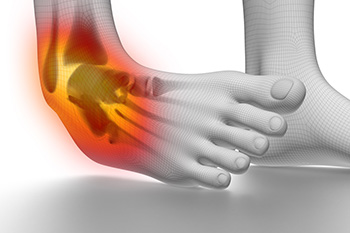
Recovering from a sprained ankle involves more than just rest and elevation. Therapeutic exercises can play a significant role in speeding up recovery and ensuring that your ankle is strong and stable. When ligaments in the ankle do not heal correctly, they remain weak and are prone to future injuries. A podiatrist can recommend a range of exercises to aid your recovery, and it is essential to follow their advice to avoid chronic ankle pain. One such exercise is the ABCs, where you sit with your foot in the air and trace the alphabet with your toes to improve your range of motion. The dorsiflexion stretch involves using a towel to gently pull your toes towards you, which increases flexibility. Toe curls and eversion exercises with a towel help in strengthening and stabilizing the ankle. Each exercise should be performed slowly and without pain to avoid aggravating the injury. Additionally, it is beneficial to check with your podiatrist before undertaking any kind of ankle exercise routine. If you have a sprained ankle, it is suggested that you schedule an appointment with a podiatrist for an exam, diagnosis, and treatment options.
Ankle sprains are common but need immediate attention. If you need your feet checked, contact one of our podiatrists from Foot Health Center of Merrimack Valley. Our doctors can provide the care you need to keep you pain-free and on your feet.
How Does an Ankle Sprain Occur?
Ankle sprains take place when the ligaments in your ankle are torn or stretched beyond their limits. There are multiple ways that the ankle can become injured, including twisting or rolling over onto your ankle, putting undue stress on it, or causing trauma to the ankle itself.
What Are the Symptoms?
- Mild to moderate bruising
- Limited mobility
- Swelling
- Discoloration of the skin (depending on severity)
Preventing a Sprain
- Wearing appropriate shoes for the occasion
- Stretching before exercises and sports
- Knowing your limits
Treatment of a Sprain
Treatment of a sprain depends on the severity. Many times, people are told to rest and remain off their feet completely, while others are given an air cast. If the sprain is very severe, surgery may be required.
If you have suffered an ankle sprain previously, you may want to consider additional support such as a brace and regular exercises to strengthen the ankle.
If you have any questions please feel free to contact one of our offices located in North Andover, and Tewksbury, MA . We offer the newest diagnostic and treatment technologies for all your foot and ankle needs.
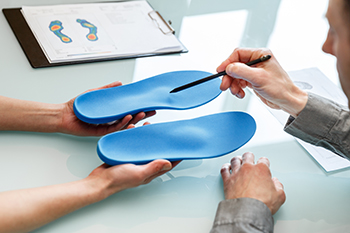 Charcot-Marie-Tooth, or CMT, disease is a hereditary condition that affects the ability of the peripheral nerves to communicate with the muscles, joints, and skin. A progressive condition, Charcot-Marie-Tooth disease affects the lower extremities first, leading to muscle weakness and atrophy, particularly in the legs and feet. Symptoms such as balance difficulties, high foot arches, twisted ankles, and foot slapping can make walking and finding appropriate footwear challenging. With no cure available, managing CMT involves stretching and exercise techniques to preserve muscle strength and flexibility, while orthotic devices and braces can provide much-needed support for improved mobility. In severe cases, surgery might be necessary to correct bone deformities. Consulting a podiatrist can be particularly beneficial in managing CMT-related foot issues, offering personalized treatments and recommendations to enhance quality of life. If you are suffering from a rare foot condition, such as CMT, it is suggested that you schedule an appointment with a podiatrist for guidance in managing its symptoms.
Charcot-Marie-Tooth, or CMT, disease is a hereditary condition that affects the ability of the peripheral nerves to communicate with the muscles, joints, and skin. A progressive condition, Charcot-Marie-Tooth disease affects the lower extremities first, leading to muscle weakness and atrophy, particularly in the legs and feet. Symptoms such as balance difficulties, high foot arches, twisted ankles, and foot slapping can make walking and finding appropriate footwear challenging. With no cure available, managing CMT involves stretching and exercise techniques to preserve muscle strength and flexibility, while orthotic devices and braces can provide much-needed support for improved mobility. In severe cases, surgery might be necessary to correct bone deformities. Consulting a podiatrist can be particularly beneficial in managing CMT-related foot issues, offering personalized treatments and recommendations to enhance quality of life. If you are suffering from a rare foot condition, such as CMT, it is suggested that you schedule an appointment with a podiatrist for guidance in managing its symptoms.
Some foot conditions may require additional professional care. If you have any concerns, contact one of our podiatrists of Foot Health Center of Merrimack Valley. Our doctors can provide the care you need to keep you pain-free and on your feet.
Rare Foot Conditions
The majority of foot conditions are common and can be treated by a podiatrist. Standard diagnostic procedures are generally used to identify specific conditions and treatment can be rendered. A podiatrist also treats rare foot conditions which can be difficult to diagnose and may need extra attention and care.
There are many rare foot conditions that can affect children. Some of these can include:
- Freiberg’s disease
- Kohler’s disease
- Maffucci syndrome
Freiberg’s disease - This can be seen as a deterioration and flattening of a metatarsal bone that exists in the ball of the foot. It typically affects pre-teen and teenage girls, but can affect anyone at any age. Symptoms that can accompany this can be swelling, stiffness, and the patient may limp.
Kohler’s disease - This often targets the bone in the arch of the foot and affects younger boys. It can lead to an interruption of the blood supply which ultimately can lead to bone deterioration. The patient may limp or experience tenderness, swelling, and redness.
Maffucci syndrome - This affects the long bones in a child’s foot leading to the development of abnormal bone lesions. They are benign growths and typically develop in early childhood and the bones may be susceptible to breaking.
A podiatrist can properly diagnose and treat all types of rare foot conditions. If your child is affected by any of these symptoms or conditions, please don’t hesitate to call our office so the correct treatment method can begin.
If you have any questions please feel free to contact one of our offices located in North Andover, and Tewksbury, MA . We offer the newest diagnostic tools and technology to treat your foot and ankle needs.
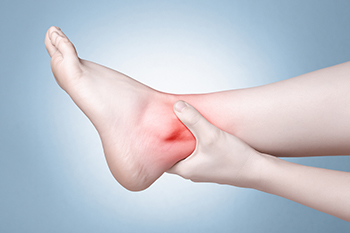
Ankle pain can range from mild discomfort to debilitating agony, often hindering mobility and affecting daily activities. Common symptoms include swelling, stiffness, and difficulty bearing weight on the affected ankle. Causes can vary from sprains and fractures to conditions like arthritis or tendonitis. Podiatrists specialize in diagnosing and treating ankle conditions. They can order diagnostic imaging, like X-rays or MRIs, to assess the extent of injury or identify any underlying conditions. Visiting a podiatrist is suggested to obtain a thorough evaluation and personalized treatment plan for ankle pain, promoting recovery and preventing future complications.
Ankle pain can be caused by a number of problems and may be potentially serious. If you have ankle pain, consult with one of our podiatrists from Foot Health Center of Merrimack Valley. Our doctors will assess your condition and provide you with quality foot and ankle treatment.
Ankle pain is any condition that causes pain in the ankle. Due to the fact that the ankle consists of tendons, muscles, bones, and ligaments, ankle pain can come from a number of different conditions.
Causes
The most common causes of ankle pain include:
- Types of arthritis (rheumatoid, osteoarthritis, and gout)
- Ankle sprains
- Broken ankles
- Achilles tendonitis
- Achilles tendon rupture
- Stress fractures
- Bursitis
- Tarsal tunnel syndrome
- Plantar fasciitis
Symptoms
Symptoms of ankle injury vary based upon the condition. Pain may include general pain and discomfort, swelling, aching, redness, bruising, burning or stabbing sensations, and/or loss of sensation.
Diagnosis
Due to the wide variety of potential causes of ankle pain, podiatrists will utilize a number of different methods to properly diagnose ankle pain. This can include asking for personal and family medical histories and of any recent injuries. Further diagnosis may include sensation tests, a physical examination, and potentially x-rays or other imaging tests.
Treatment
Just as the range of causes varies widely, so do treatments. Some more common treatments are rest, ice packs, keeping pressure off the foot, orthotics and braces, medication for inflammation and pain, and surgery.
If you have any questions, please feel free to contact one of our offices located in North Andover, and Tewksbury, MA . We offer the newest diagnostic and treatment technologies for all your foot care needs.
Blog Archives
- 2025
- 2024
- 2023
- 2022
- 2021
- 2020
- 2019
- 2018








